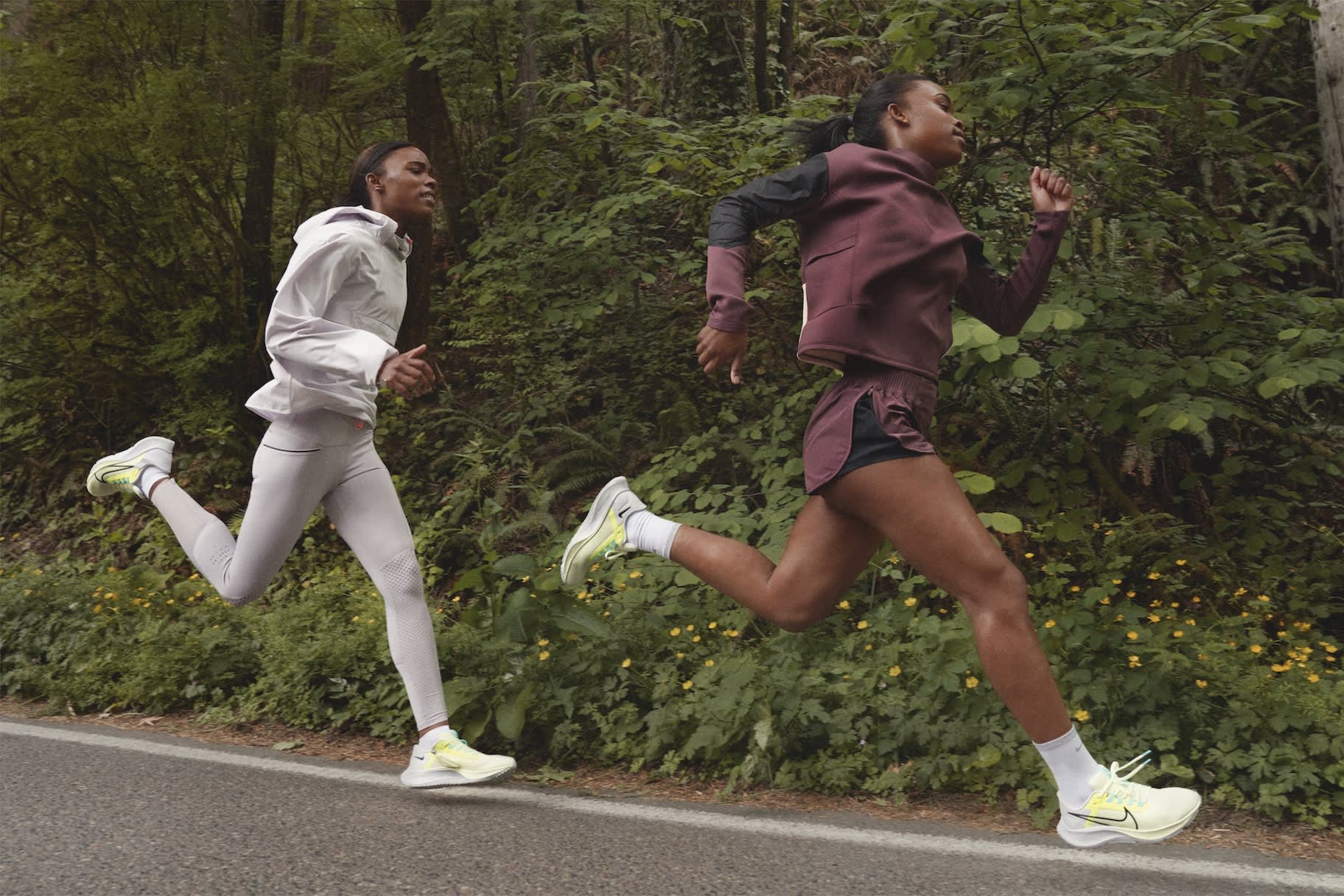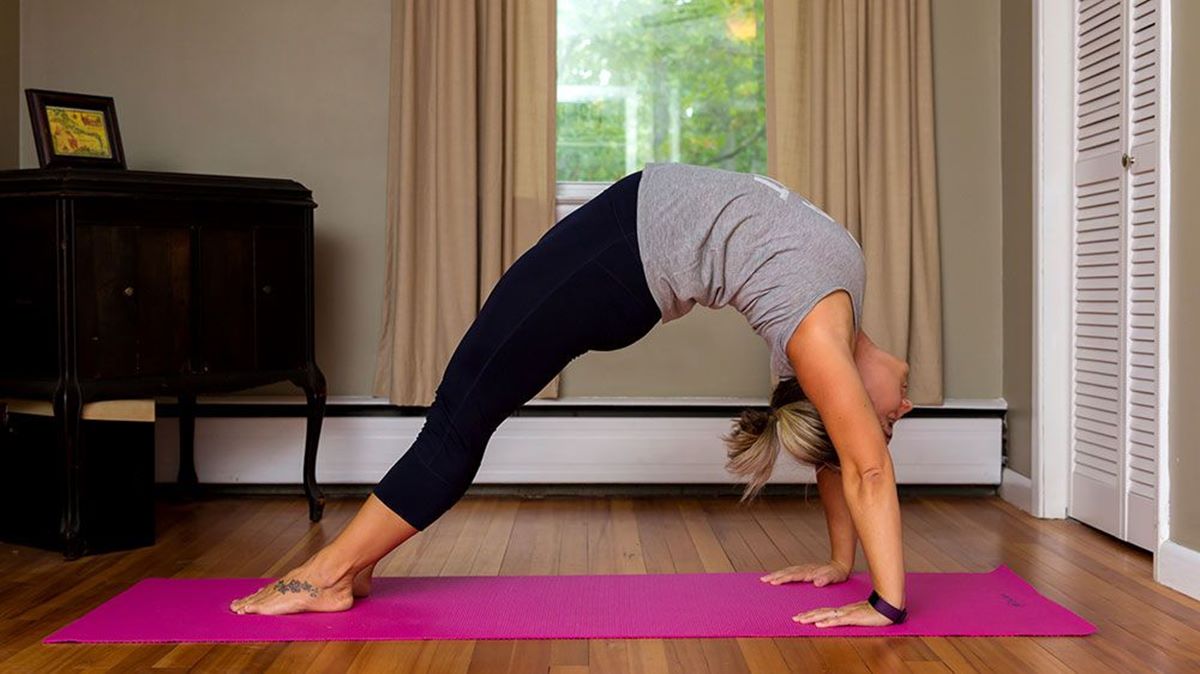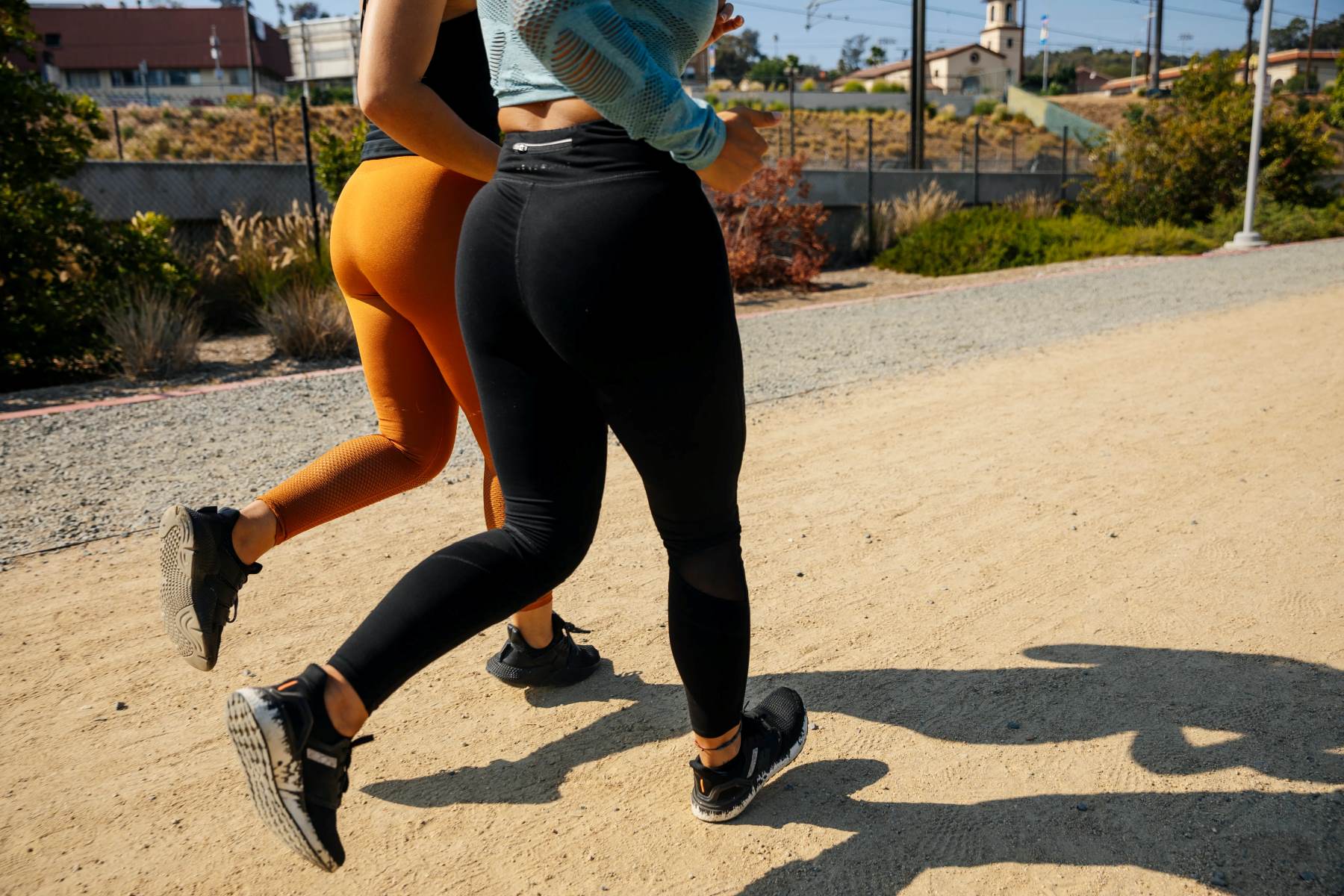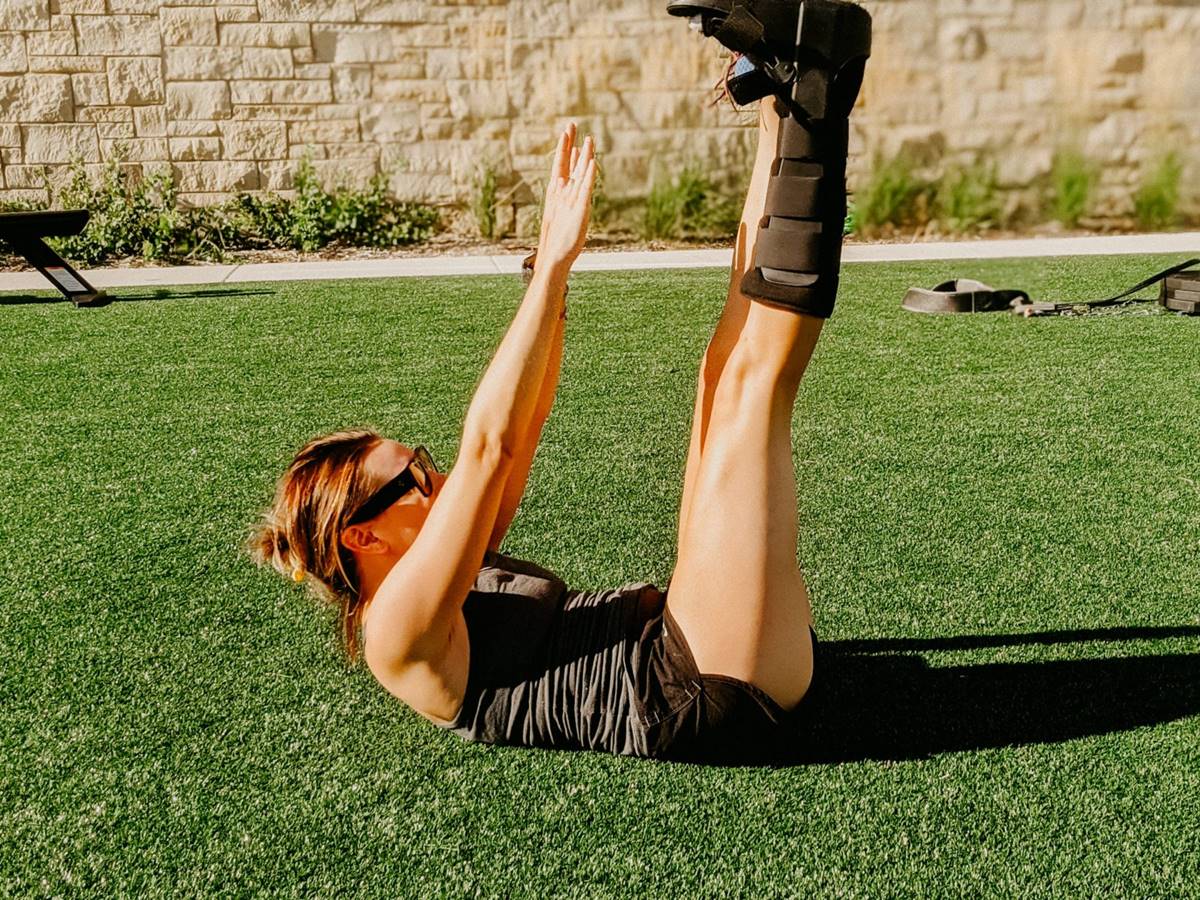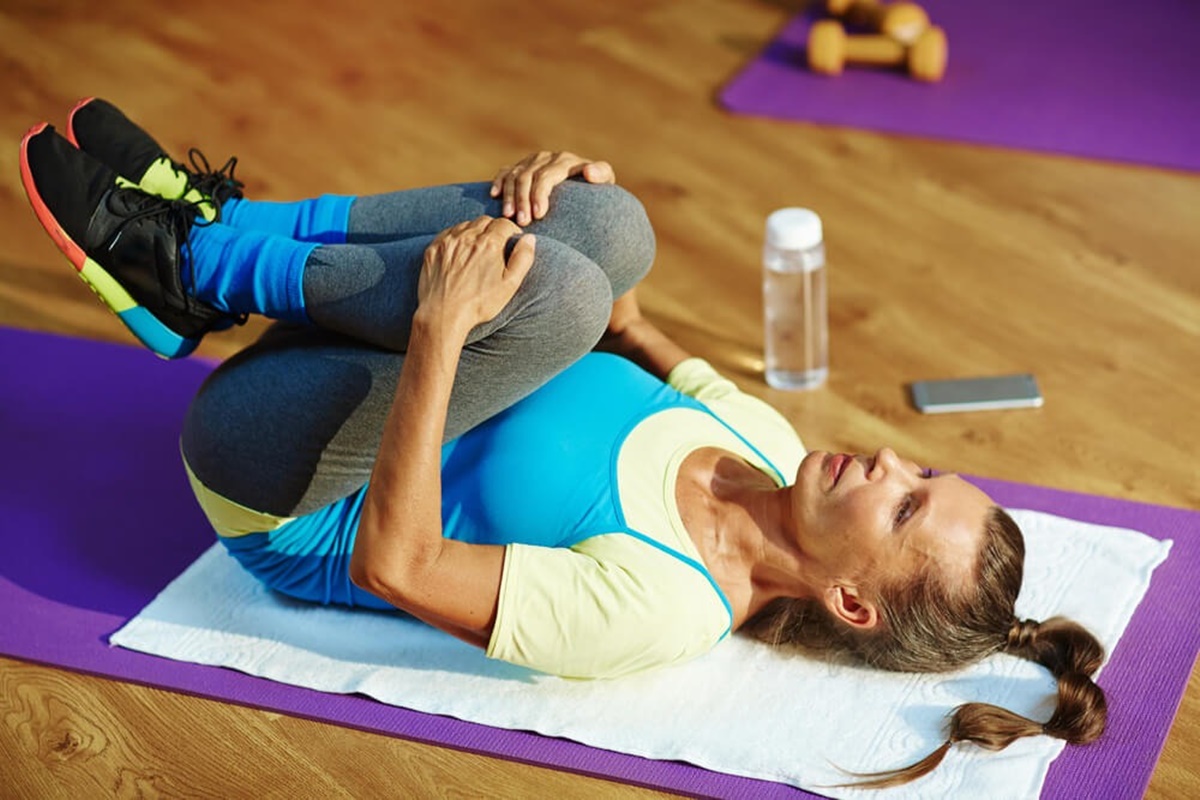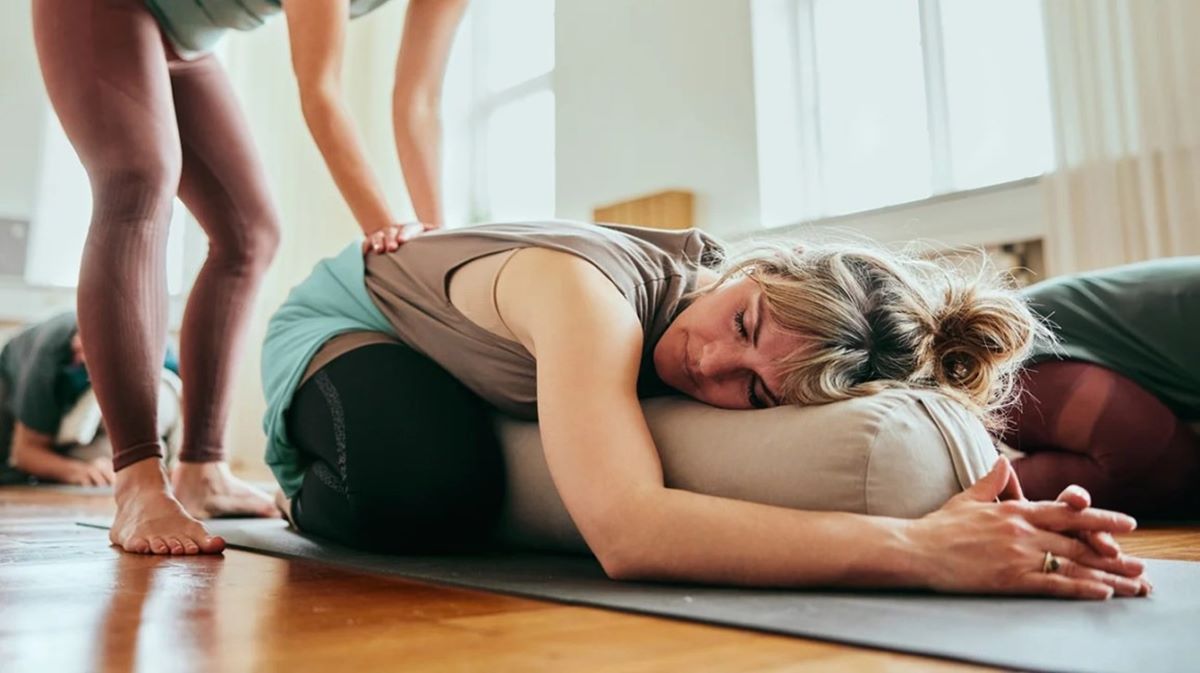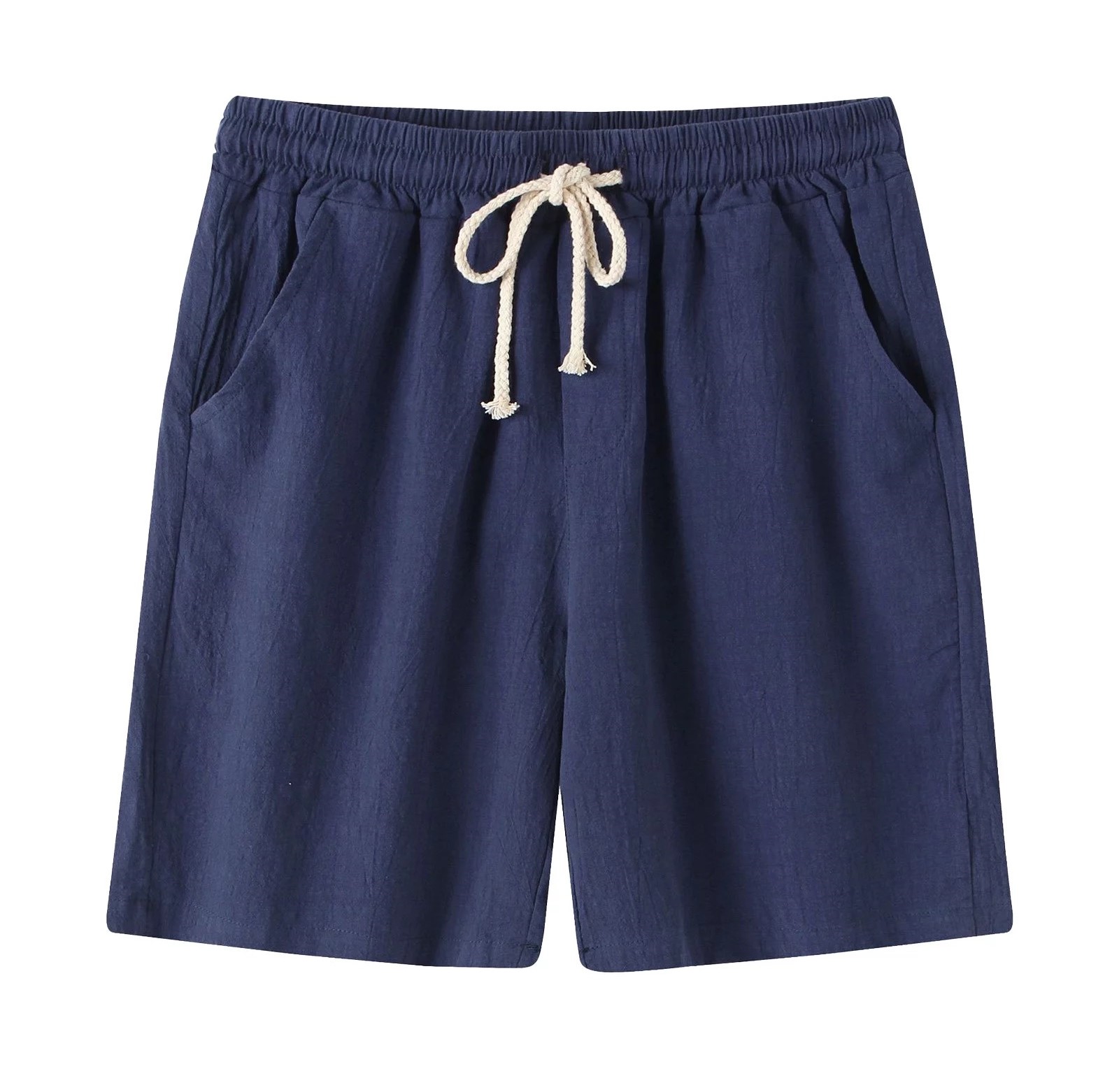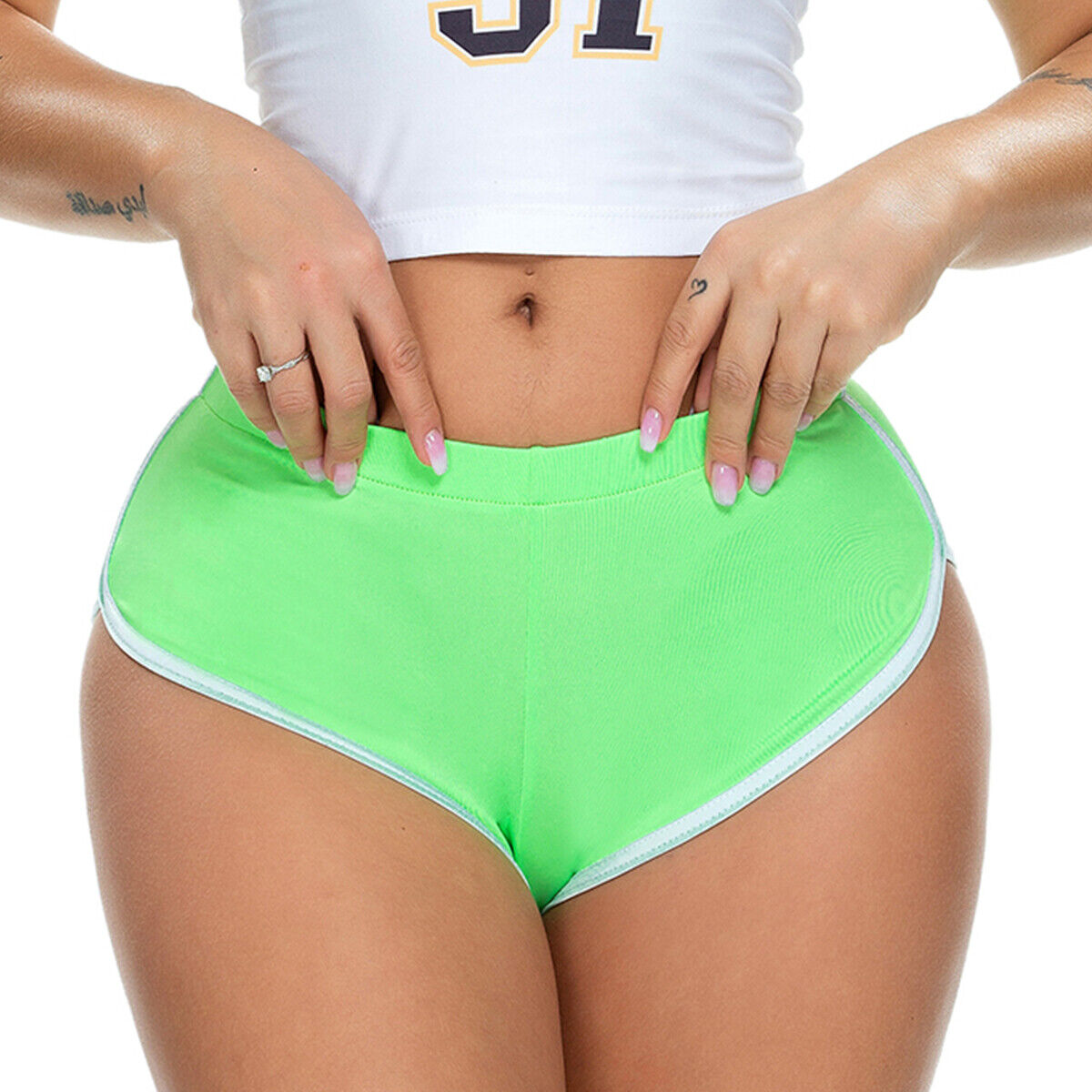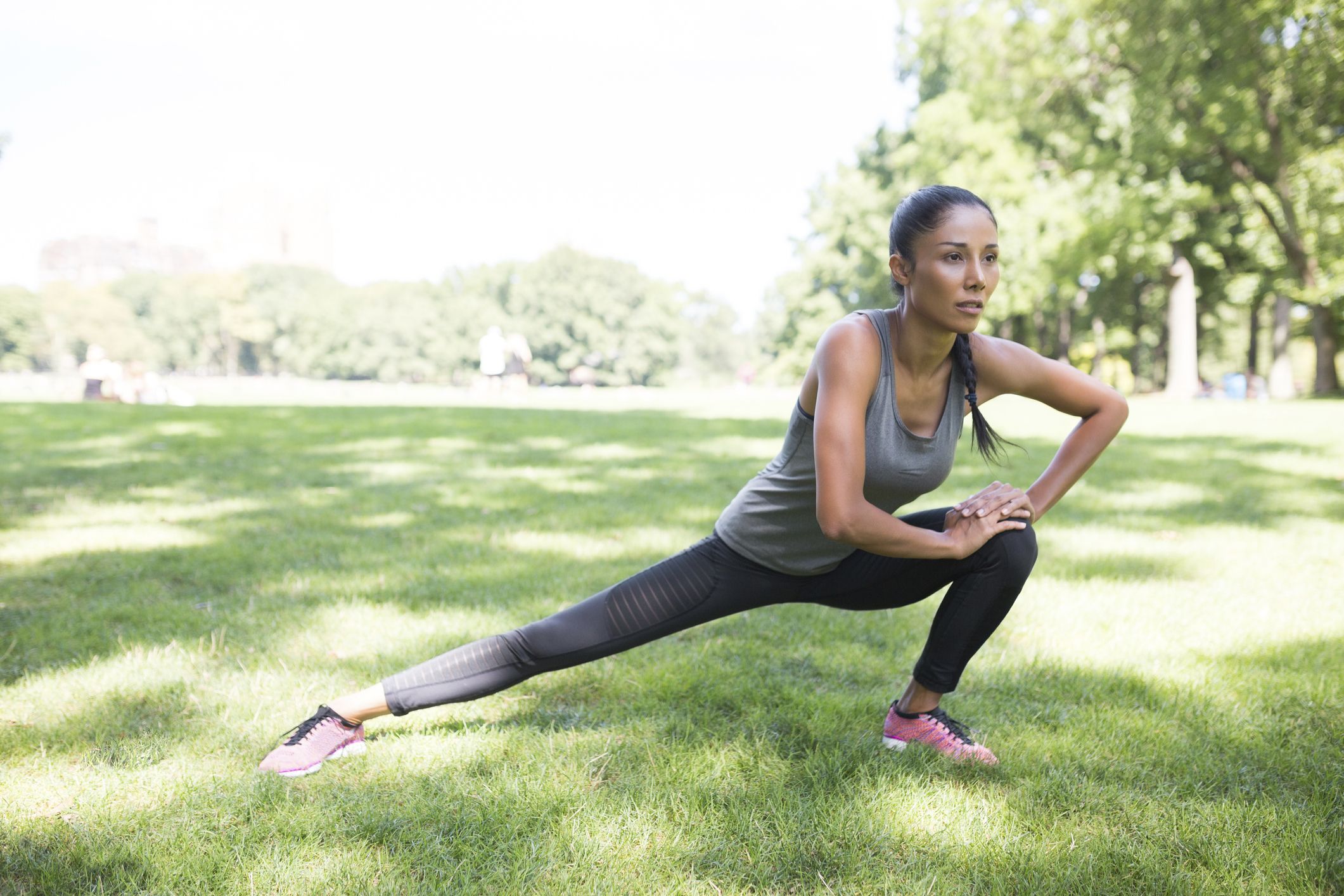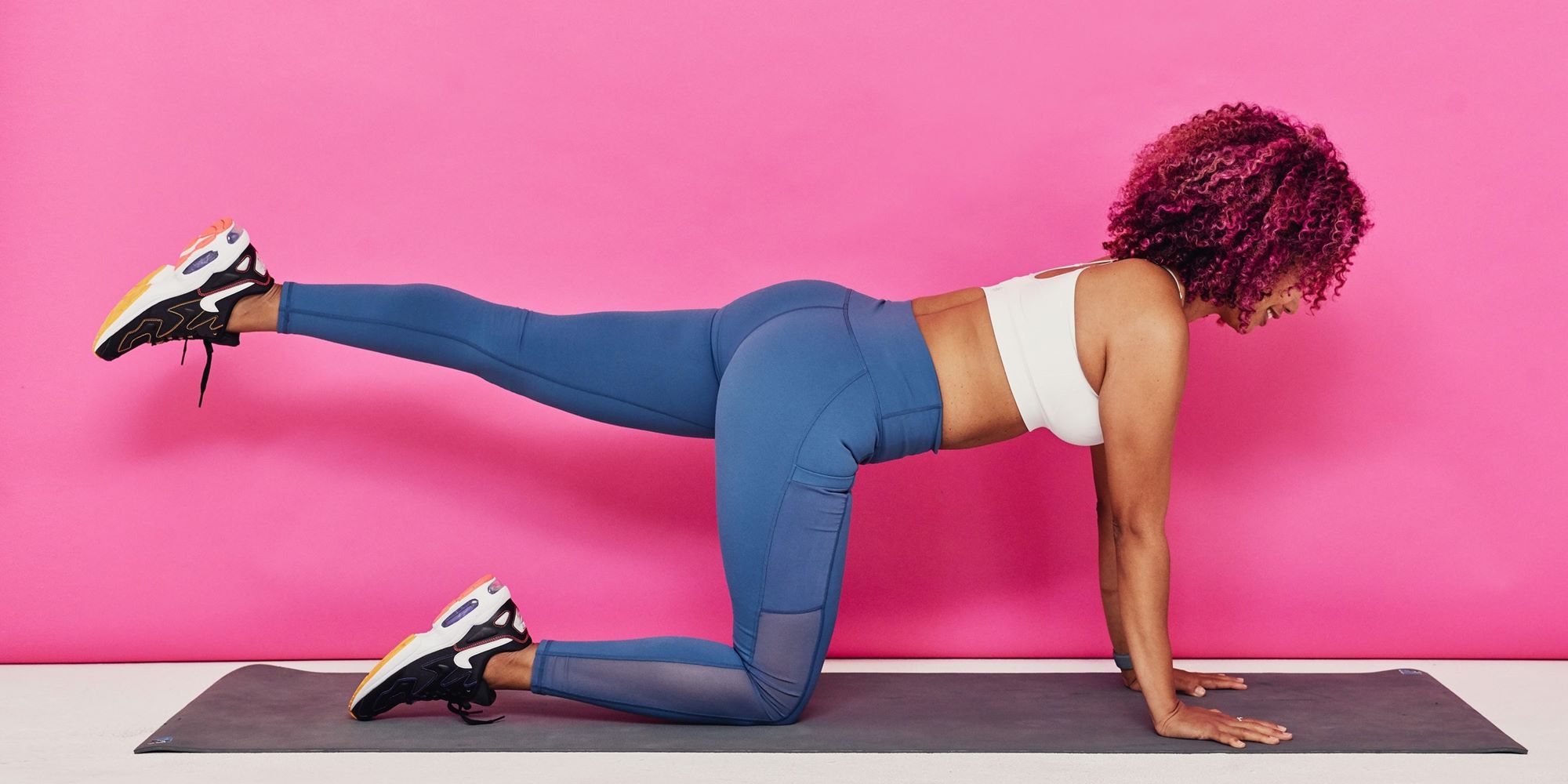

Featured
What Exercise Makes Your Buttocks Bigger
Published: September 28, 2023
Get a bigger and more toned buttocks with this featured exercise! Discover the best workout routine for enhancing your backside and achieving your desired results.
Introduction
When it comes to achieving a toned and shapely physique, many people focus on targeting specific areas of their body. One area that often receives significant attention is the buttocks. A well-defined and round posterior is not only aesthetically pleasing but also a symbol of strength and fitness.
However, achieving a bigger and more toned butt requires more than just wishful thinking or sitting on the couch. It requires a strategic exercise plan that specifically targets and stimulates the muscles in the buttocks.
In this article, we will explore various exercise techniques that can help you achieve a firmer and more prominent buttocks. We will delve into the different muscles involved, factors that affect buttocks size, and specific exercises that can help you sculpt the perfect posterior.
Whether you’re looking to enhance your curves, improve athletic performance, or simply feel more confident in your own skin, understanding the best exercises for bigger buttocks will prove invaluable.
So, let’s dive in and learn how you can achieve that desirable booty you’ve always dreamed of!
Understanding Your Buttocks Muscles
Before we delve into the exercises for a bigger butt, it’s essential to understand the muscles involved. The buttocks, or glutes, are made up of three main muscles: the gluteus maximus, gluteus medius, and gluteus minimus.
The gluteus maximus is the largest muscle in the buttocks and plays a significant role in shaping and lifting the rear end. It is responsible for hip extension, which means it’s activated when you push your hips forward, such as during squats or lunges.
The gluteus medius and gluteus minimus are smaller muscles located on the sides of the buttocks. These muscles assist in hip abduction, which involves moving the leg away from the body’s midline. They contribute to hip stabilization and help with balance during various exercises.
Each of these muscles needs to be targeted in order to achieve a well-rounded and defined butt. By engaging all three muscles through specific exercises, you can maximize their growth and attain a more pronounced and lifted appearance.
Keep in mind that genetics also play a role in the size and shape of your buttocks. Some individuals naturally have more muscle mass and a rounder butt, while others may need to work harder to achieve their desired results.
Now that you have a better understanding of your buttocks muscles, let’s dive into the factors that can influence the size and shape of your butt.
Factors Affecting Buttocks Size
When it comes to the size and shape of your buttocks, several factors come into play. Understanding these factors can help you set realistic expectations and tailor your exercise routine accordingly.
1. Genetics: Your genetic makeup significantly influences the size and shape of your buttocks. Some individuals may naturally have more muscle mass and a rounder butt, while others may have a flatter or narrower shape. While you can’t change your genetics, you can still work on building and toning your glute muscles to enhance your natural shape.
2. Body Fat Percentage: The amount of body fat you carry also affects the appearance of your buttocks. Excess body fat can make your butt look less defined, while lower body fat levels can highlight the muscles and create a more sculpted look. To achieve a bigger and toned butt, it’s important to maintain a balanced and healthy body fat percentage through proper nutrition and exercise.
3. Hormonal Balance: Hormones, such as estrogen and testosterone, play a role in the distribution of fat and muscle development in the body. Hormonal imbalances can affect the shape and size of your buttocks. Women, for example, tend to have a higher percentage of body fat in their hips and buttocks due to the influence of estrogen. However, with the right exercise routine, hormonal imbalances can be managed, and the muscles in the buttocks can be strengthened and toned.
4. Diet and Nutrition: Your diet and nutrition also play a crucial role in buttocks size. Consuming a balanced diet that includes enough protein can support muscle growth and development. Additionally, consuming enough calories provides the energy necessary for intense workouts, allowing you to build and tone your buttocks muscles effectively.
5. Exercise Routine: The type and intensity of the exercises you perform can directly impact the growth and shape of your buttocks. Targeted exercises that focus on the glute muscles can help increase muscle size and enhance the appearance of your buttocks. Consistency and progressive overload are key. Gradually increasing the weight or resistance as your muscles adapt will stimulate growth and development.
Understanding these factors can help you set realistic goals and develop a tailored exercise and nutrition plan to achieve your desired buttocks size. So, let’s move on to the next section, where we will explore specific exercise techniques for a bigger butt.
Exercise Techniques for Bigger Buttocks
When it comes to achieving a bigger and more lifted butt, incorporating specific exercises that target the glute muscles is essential. By focusing on these exercises, you can stimulate muscle growth, increase strength, and enhance the overall appearance of your buttocks.
Before diving into the specific exercises, keep in mind that consistency and proper form are key. Aim to perform these exercises at least three times a week, gradually increasing the intensity and resistance as your muscles adapt.
1. Squats: Squats are considered the ultimate buttock-building exercise. To perform a squat, stand with your feet shoulder-width apart, squat down as if sitting into a chair, and then push through your heels to stand back up. Squats target the gluteus maximus, quadriceps, and hamstrings, helping to increase overall lower body strength and size.
2. Lunges: Lunges are another effective exercise for targeting the glute muscles. To perform a lunge, take a step forward with one foot and lower your body until both knees are bent at a 90-degree angle. Push through your front heel to return to the starting position. Lunges work the glutes, quadriceps, and hamstrings, helping to shape and tone your buttocks.
3. Glute Bridges: Glute bridges target the gluteus maximus and medius muscles. Lie flat on your back with your knees bent and feet hip-width apart. Push through your heels and lift your hips up, squeezing your glutes at the top. Focus on maintaining a straight line from your shoulders to your knees. Lower your hips back down and repeat. Glute bridges activate and strengthen the glute muscles, helping to lift and shape your buttocks.
4. Step-Ups: Step-ups are a great exercise for adding definition and volume to your buttocks. Place one foot on a step or platform, and push through your heel to lift your body up. Step back down and repeat with the other foot. Step-ups target the glutes, quadriceps, and hamstrings, helping to build muscle and create a more rounded shape in your buttocks.
5. Hip Thrusts: Hip thrusts are a powerful exercise that primarily target the glutes. To perform a hip thrust, sit on the ground with your upper back against a bench or step. Place a weighted barbell or a dumbbell across your hips, and then push through your heels to lift your hips up, squeezing your glutes at the top. Lower your hips back down and repeat. Hip thrusts are highly effective for building strength and size in the glute muscles.
6. Kickbacks: Kickbacks isolate and tone the glutes, specifically targeting the gluteus maximus. Start on all fours, with your hands directly under your shoulders and knees under your hips. Kick one leg back and up, focusing on squeezing your glutes at the top of the movement. Lower your leg back down and repeat with the other leg. Kickbacks are excellent for enhancing the shape and size of your buttocks.
Incorporating these exercise techniques into your workout routine will help you build and sculpt a bigger and more toned butt. Remember to perform each exercise with proper form and gradually increase the intensity as your muscles grow stronger. Stay consistent and patient, and you’ll begin to see results in no time!
Squats: The Ultimate Buttock Builder
When it comes to building a bigger and more lifted butt, squats are often hailed as the ultimate exercise. Squats are a compound movement that targets multiple muscles in the lower body, with a primary focus on the gluteus maximus, the largest muscle in the buttocks.
To perform a squat, start by standing with your feet shoulder-width apart. You can position your arms in front of you for balance or place your hands on your hips. Engage your core, keep your chest lifted, and maintain a neutral spine throughout the movement.
From this position, begin to lower your body as if you’re sitting back into a chair. Focus on pushing your hips back and bending at the knees. Keep your weight in your heels and keep your knees tracking over your toes as you descend. Aim to lower to a position where your thighs are parallel to the ground, or slightly below if your mobility allows.
Once you’ve reached the lowest point of your squat, push through your heels and engage your glute muscles to rise back up to the starting position. As you ascend, squeeze your glutes at the top to maximize the activation of the buttock muscles.
There are various squat variations you can incorporate into your workout routine to target different parts of the glutes and add variety to your training.
1. Back Squat: The back squat is performed by placing a barbell across your upper back. This variation allows you to handle heavier weights and puts more emphasis on the gluteus maximus, as well as the quadriceps and hamstrings.
2. Front Squat: The front squat involves resting the barbell on the front of your shoulders, with your elbows pointing forward. This variation shifts the focus more onto the quadriceps and places less stress on the lower back.
3. Sumo Squat: The sumo squat is performed with a wider stance and toes pointed outward. This variation places extra emphasis on the inner thighs and targets the gluteus medius to a greater extent.
4. Goblet Squat: The goblet squat involves holding a dumbbell or kettlebell at chest level while performing the squat movement. This variation helps to improve squat mechanics and engages the core to a greater degree.
5. Bulgarian Split Squat: The Bulgarian split squat is a unilateral exercise where one leg is elevated on a bench or step behind you. This variation helps to correct imbalances between the left and right side of the body and increases the activation of the gluteus medius and minimus.
Regardless of the squat variation you choose, consistency and progressive overload are vital for building a bigger butt. Gradually increase the weight or resistance as your muscles adapt to continue challenging them and promoting growth.
Remember to always prioritize proper form and technique. Start with a weight that allows you to perform the movement with good form and gradually increase the load as you become more comfortable and confident.
Incorporating squats into your workout routine can significantly contribute to the development and sculpting of your buttocks. The compound nature of squats not only strengthens and increases the size of the glute muscles but also helps to improve overall lower body strength and stability.
So, don’t skip squats if you’re aiming for a bigger and more defined butt. Embrace this ultimate buttock builder and reap the rewards of a stronger, more sculpted, and curvier posterior.
Lunges: Sculpting and Enhancing Your Buttocks
When it comes to sculpting and enhancing your buttocks, lunges are a powerhouse exercise that should not be overlooked. Lunges specifically target the glute muscles, helping to lift, shape, and strengthen your buttocks.
To perform a lunge, start by standing tall with your feet hip-width apart. Take a step forward with one leg, lowering your body until both knees are bent at a 90-degree angle. Your front knee should be directly above your ankle, and your back knee should hover just above the ground.
Engage your core, keep your chest lifted, and push through your front heel as you rise back up to the starting position. Repeat the movement on the other leg by taking a step forward and lowering down into the lunge position.
Lunges come in various forms and variations, allowing you to target different areas of your glutes and add variety to your workout routine. Here are a few lunge variations to consider:
1. Walking Lunges: Walking lunges involve continuously stepping forward into a lunge position, alternating between each leg. This variation not only targets the glutes but also engages the quadriceps and hamstrings, providing an excellent full lower body workout.
2. Reverse Lunges: Reverse lunges are performed by stepping backward into a lunge position instead of forward. This variation shifts the focus onto the glutes and hamstrings and can be less straining on the knees.
3. Curtsy Lunges: Curtsy lunges are a great option for targeting the gluteus medius and minimus. Start by standing tall, then step one leg diagonally behind you, crossing it behind the other leg as if performing a curtsy. Lower your body down into a lunge position and then push through your front heel to return to standing.
4. Side Lunges: Side lunges primarily target the gluteus medius and the muscles on the outside of the hips. Begin by standing with your feet wider than shoulder-width apart. Shift your weight to one side as you bend that knee and push your hips back, lowering your body towards that side. Push through your heel to return to the starting position and repeat on the other side.
Adding lunges to your workout routine not only sculpts and enhances your buttocks but also improves balance, stability, and overall lower body strength. It is important to focus on proper form and technique to maximize the benefits and reduce the risk of injury.
As with any exercise, start with a weight or resistance level that allows you to maintain good form throughout the movement. Gradually increase the difficulty by adding weights or progressing to more challenging variations as your muscles adapt and get stronger.
Remember, consistency is key when it comes to lunges. Aim to incorporate them into your workouts at least two to three times per week, and be patient with your progress. Over time, you will notice your buttocks becoming more sculpted, shapely, and toned.
So, don’t neglect lunges in your quest for a more lifted and defined butt. Embrace this versatile exercise and enjoy the benefits of a stronger, curvier, and more confident posterior.
Glute Bridges: Activating and Strengthening Your Glutes
When it comes to activating and strengthening your glutes, glute bridges are a highly effective exercise. This compound movement targets the entire gluteus maximus muscle, helping to activate and develop your buttocks for a more lifted and rounded appearance.
To perform a glute bridge, start by lying flat on your back with your knees bent and feet planted firmly on the ground, hip-width apart. Rest your arms by your sides with your palms facing down.
Engage your core, squeeze your glutes, and push through your heels to lift your hips up off the ground until your body forms a straight line from your knees to your shoulders. Avoid overarching your lower back, and focus on maintaining a neutral spine throughout the movement.
At the top of the movement, pause for a moment and squeeze your glutes as hard as you can. This contraction is essential for activating and maximizing the engagement of your glute muscles. Slowly lower your hips back down to the starting position and repeat the movement for the desired number of repetitions.
There are variations of glute bridges that can help you progress and challenge your glutes even further:
1. Single-Leg Glute Bridge: This variation involves performing the glute bridge movement with one leg raised off the ground. Place one foot on the opposite knee, and perform the glute bridge with the other leg. This variation increases the activation and strength requirements of your glutes, providing a more challenging exercise.
2. Elevated Glute Bridge: In the elevated glute bridge variation, you place your feet on an elevated surface, such as a step or a bench. This increases the range of motion and requires your glutes to work harder to lift your hips off the ground.
3. Resistance Band Glute Bridge: To add resistance to your glute bridge, you can use a resistance band placed just above your knees. This helps to engage the glute muscles even more, making the exercise more challenging and effective.
Glute bridges are a valuable addition to any workout routine, as they not only help to activate and strengthen the glute muscles but also improve hip mobility and stability. They are particularly beneficial for individuals with weak or underactive glutes, as they can help to correct muscle imbalances and enhance overall lower body strength.
Remember to focus on proper form and technique during glute bridges. Mindfully engage your glutes throughout the movement and avoid relying on your lower back or hamstrings to lift your hips. Gradually increase the number of repetitions and sets as your glute strength improves.
Make glute bridges a regular part of your workout routine, aiming to perform them at least two to three times per week. Consistency, along with progressive overload, will lead to increased strength and a more sculpted and lifted butt over time.
So, don’t underestimate the power of glute bridges in activating and strengthening your glutes. Embrace this exercise and enjoy the benefits of a more toned, lifted, and well-rounded posterior.
Step-Ups: Adding Definition and Volume to Your Buttocks
When it comes to adding definition and volume to your buttocks, step-ups are a highly effective exercise to incorporate into your routine. Step-ups target the glute muscles and provide a great workout for your lower body, helping to shape and strengthen your buttocks.
To perform a step-up, you will need a stable elevated surface such as a step, bench, or box. Place one foot on the elevated surface and push through the heel of that foot to lift your body up. Bring your other foot up onto the surface, and then step back down with the same foot. Repeat the movement, alternating between each leg.
Step-ups work predominantly the gluteus maximus, quadriceps, and hamstrings, making it a compound exercise that targets multiple muscle groups in the lower body. By incorporating step-ups into your workout routine, you can add definition, shape, and volume to your buttocks.
There are a few variations of step-ups that you can try to further challenge your glute muscles:
1. Weighted Step-Ups: As you become more comfortable with step-ups, you can add resistance by holding dumbbells or a kettlebell in each hand. Adding weight increases the demands on your glutes, helping to foster muscle growth and development.
2. High Step-Ups: Performing step-ups on an elevated platform higher than knee level increases the range of motion and intensifies the exercise. This variation places greater emphasis on the glute muscles, providing a more challenging stimulus for growth and toning.
3. Lateral Step-Ups: Instead of stepping up directly in front of you, take a step to the side onto the elevated surface. Alternate between each leg, focusing on engaging your glutes and maintaining proper form throughout the movement. Lateral step-ups target the gluteus medius and can help with hip stability and balance.
When performing step-ups, it’s essential to maintain proper form. Keep your chest upright, engage your core, and focus on pushing through the heel of the working leg to maximize glute activation. Avoid relying on your back leg for assistance and aim for controlled movements throughout the exercise.
Start with a height that allows you to maintain good balance and stability, gradually increasing the height as your strength and confidence improve. Aim to perform step-ups at least two to three times per week, incorporating them into your lower body or leg-focused workouts.
Including step-ups in your exercise routine not only helps to add definition and volume to your buttocks but also improves lower body strength, stability, and overall functionality. As with any exercise, progressive overload is important. Gradually increase the difficulty by adding weight, increasing the height of the platform, or performing more repetitions.
So, don’t underestimate the impact of step-ups in shaping and strengthening your buttocks. Incorporate this exercise into your routine, and before long, you’ll notice newfound definition, volume, and confidence in your rear end.
Hip Thrusts: Powering Up Your Glute Muscles
If you’re looking to power up your glute muscles and achieve a stronger and more shapely buttocks, hip thrusts are a highly effective exercise to incorporate into your workout routine. Hip thrusts specifically target and activate the gluteus maximus, making it one of the best exercises for building and sculpting your buttocks.
To perform a hip thrust, start by sitting on the ground with your upper back against a bench or step. Place a weighted barbell or a dumbbell across your hips. Bend your knees and place your feet flat on the ground, hip-width apart. Engage your core and glutes, and brace your abdominals.
Push through your heels and drive your hips upward, activating your glute muscles. Keep your shoulders and upper back in contact with the bench or step to maintain stability and avoid straining your lower back. Squeeze your glutes at the top of the movement, hold for a moment, and then lower your hips back down to the starting position under control.
There are variations of hip thrusts that you can try to challenge your glute muscles and add variety to your routine:
1. Single-Leg Hip Thrusts: This variation involves performing the hip thrust movement with one leg elevated off the ground. This intensifies the exercise by increasing the workload on the glute muscles of the working leg. Alternate between each leg to ensure balanced development.
2. Banded Hip Thrusts: By adding resistance bands just above your knees, you can create additional tension throughout the movement. This places greater emphasis on the glute muscles and helps to activate the gluteus medius, enhancing overall glute development.
3. Glute Bridge Pulses: Instead of lifting your hips all the way up, perform smaller and quicker pulses at the top of the movement. This continuous contraction puts constant tension on the glute muscles, creating a burn and promoting muscle growth.
Hip thrusts are an excellent exercise for isolating and strengthening the glute muscles, leading to greater power, shape, and definition throughout the buttocks. Ensure that you focus on proper form, maintaining a neutral spine and engaging your glutes throughout the exercise.
Start with a weight or resistance level that allows you to perform the movement with good form, gradually increasing the load as your glute strength improves. Aim to incorporate hip thrusts into your workout routine two to three times per week, performing three to four sets of 8 to 12 repetitions.
Consistency and progression are key when it comes to hip thrusts. Strive to challenge yourself with heavier weights, increase the number of sets and repetitions, or try different variations to continue stimulating muscle growth and development.
By incorporating hip thrusts into your training regimen, you can power up your glute muscles and take your buttocks to the next level. Embrace this exercise and enjoy the results of stronger, more defined, and aesthetically pleasing glutes.
Kickbacks: Isolating and Toning Your Buttocks
If you’re looking to isolate and tone your buttocks, kickbacks are a fantastic exercise to incorporate into your workout routine. Kickbacks specifically target the glute muscles, helping to strengthen and shape your rear end for a more defined and lifted appearance.
To perform kickbacks, start by getting down on all fours with your hands directly beneath your shoulders and your knees hip-width apart. Engage your core and keep your back straight throughout the movement.
Begin by lifting one leg behind you, extending it straight back while keeping your knee slightly bent. Focus on squeezing your glutes at the top of the movement to maximize muscle activation. Slowly lower your leg back down and repeat the movement on the opposite side.
Kickbacks can be performed with bodyweight alone, or you can incorporate ankle weights or resistance bands to increase the difficulty and challenge your glute muscles even more.
There are variations of kickbacks that you can try to target different areas of your glutes and add variety to your routine:
1. Donkey Kickbacks: Donkey kickbacks involve kicking your leg straight back in a bent-knee position, similar to a donkey’s kick. This variation increases the range of motion and emphasizes the glute muscles, specifically targeting the gluteus maximus.
2. Fire Hydrant Kickbacks: Fire hydrant kickbacks involve performing a lateral leg lift instead of kicking straight back. Start from the all-fours position and lift your leg out to the side, keeping your knee bent at a 90-degree angle. This variation targets the gluteus medius and minimus, which help to create the roundness and shape of your buttocks.
3. Standing Kickbacks: If you prefer standing exercises, you can perform kickbacks by placing your hands on a sturdy surface, like a wall or a chair, for support. From a standing position, lift one leg directly behind you, keeping it straight or slightly bent, and squeeze your glutes at the top of the movement.
When performing kickbacks, it’s important to maintain proper form and focus on the mind-muscle connection with your glutes. Avoid arching your lower back or using momentum to lift your leg. It’s better to focus on quality over quantity, ensuring that you’re really engaging and activating your glutes throughout the movement.
Incorporate kickbacks into your workout routine two to three times per week, aiming for 2 to 3 sets of 12 to 15 repetitions per leg. As with any exercise, progressive overload is key. Gradually increase the resistance, repetitions, or sets as your glute strength improves.
Kickbacks are a highly effective exercise for isolating and toning your buttocks. They help to target the glute muscles and enhance their shape, definition, and overall strength. By incorporating kickbacks into your routine, you’ll be on your way to achieving a more sculpted and firm posterior.
Conclusion
Building a bigger and more defined butt is achievable with the right exercise techniques and consistent effort. By understanding the muscles involved, the factors that affect buttocks size, and incorporating targeted exercises, you can sculpt and enhance your buttocks for a more lifted and shapely appearance.
Exercises such as squats, lunges, glute bridges, step-ups, hip thrusts, and kickbacks are all effective in targeting and strengthening the glute muscles. These exercises provide a well-rounded approach, focusing on different aspects of the glutes to maximize growth and definition.
Consistency, proper form, and progressive overload are essential principles to follow when engaging in these exercises. Consistently incorporating them into your workout routine, maintaining proper form, and gradually increasing the intensity and resistance will lead to noticeable results over time.
Remember, genetics and other factors may affect the size and shape of your buttocks, but with dedication and the right exercises, you can work towards developing a stronger and more sculpted butt that aligns with your goals.
Additionally, a balanced diet and proper nutrition play a crucial role in optimizing your results. Supporting your workouts with a diet rich in protein and nutrients will provide the building blocks necessary for muscle growth.
As you embark on your journey to achieve a bigger and more defined butt, it’s essential to embrace your individuality and progress at your own pace. Everyone’s body is unique, and results may vary. Embrace the process, stay consistent, and focus on your own progress rather than comparing yourself to others.
So, whether you’re aiming for a curvier silhouette, improved athletic performance, or simply a boost in self-confidence, incorporating these exercise techniques can help you in your journey to a bigger, stronger, and more defined buttocks.
Remember, building the desired shape and size takes time and effort. Stay committed, stay motivated, and enjoy the transformation as your posterior becomes a true reflection of your hard work and dedication.
References
1. Schoenfeld, B. J., Contreras, B., Krieger, J., Grgic, J., Delcastillo, K., Belliard, R., & Alto, A. (2020). Resistance Training Volume Enhances Muscle Hypertrophy But Not Strength in Trained Men. Medicine and Science in Sports and Exercise, 52(4), 767-776.
2. Gentil, P., Soares, S., & Bottaro, M. (2015). Single vs. Multi-Joint Resistance Exercises: Effects on Muscle Strength and Hypertrophy. Asian Journal of Sports Medicine, 6(2), e24057.
3. Schoenfeld, B. J. (2010). Squatting kinematics and kinetics and their application to exercise performance. Journal of Strength and Conditioning Research, 24(12), 3497-3506.
4. Andersen, V., Fimland, M. S., & Saeterbakken, A. H. (2014). Effects of Body Position and Loading Modality on Muscle Activity and Strength in Squatting. Journal of Strength and Conditioning Research, 28(11), 3230-3241.
5. Clark, D. R., Lambert, M. I., & Hunter, A. M. (2016). Muscle Activation in the Loaded Free Barbell Squat: A Brief Review. Journal of Strength and Conditioning Research, 30(4), 1161-1168.
6. Folland, J. P., & Williams, A. G. (2007). The adaptations to strength training: morphological and neurological contributions to increased strength. Sports Medicine, 37(2), 145-168.
7. Steele, J., Bruce-Low, S., Smith, D., & Bass, J. (2012). A Review of the Mechanical and Muscle Activity Adaptations to Common Resistance Training Exercises. Sports Medicine, 42(9), 793-817.
8. Contreras, B., Vigotsky, A. D., Schoenfeld, B. J., Beardsley, C., & Cronin, J. (2015). A Comparison of Gluteus Maximus, Biceps Femoris, and Vastus Lateralis Electromyography Amplitude for the Barbell, Band, and American Hip Thrust Variations in Resistance-Trained Females. Journal of Applied Biomechanics, 31(6), 452-458.
9. McCurdy, K. W., Langford, G. A., Doscher, M. W., Wiley, L. P., Mallard, K. G., & Baechle, T. R. (2005). The Effects of Short-Term Baseball and Softball Batting Practice on Subsequent Performance. Journal of Strength and Conditioning Research, 19(3), 742-748.
10. Paoli, A., Marcolin, G., & Petrone, N. (2009). The effect of stance width on the electromyographical activity of eight superficial thigh muscles during back squat with different bar loads. Journal of Strength and Conditioning Research, 23(1), 246-250.

